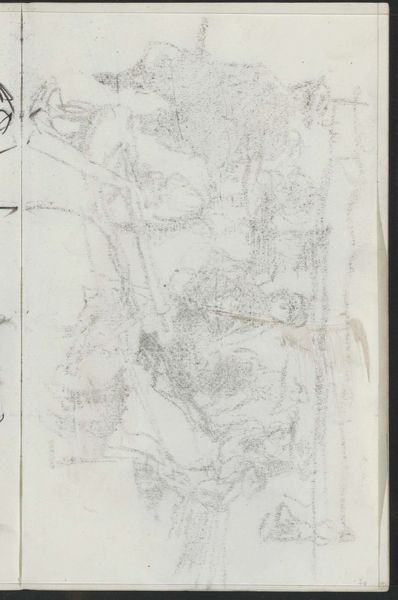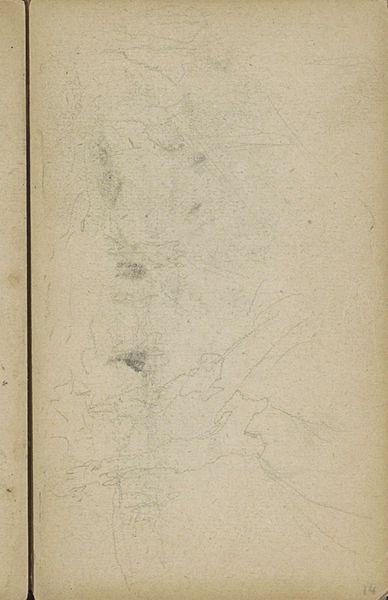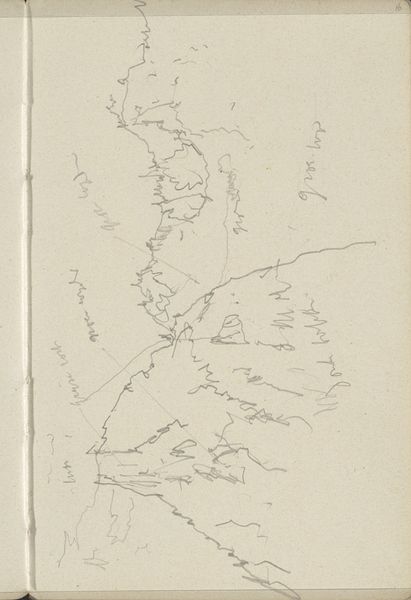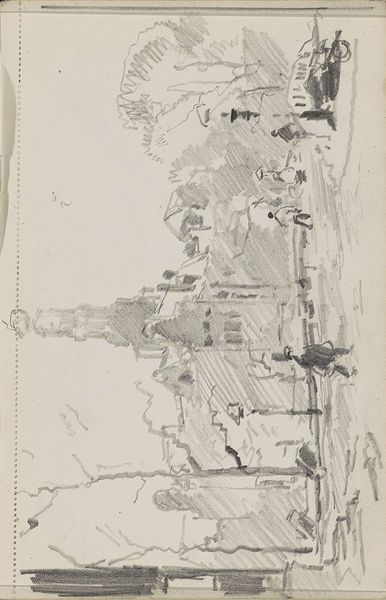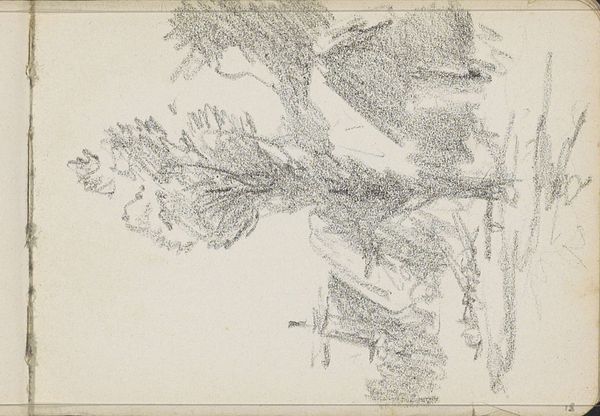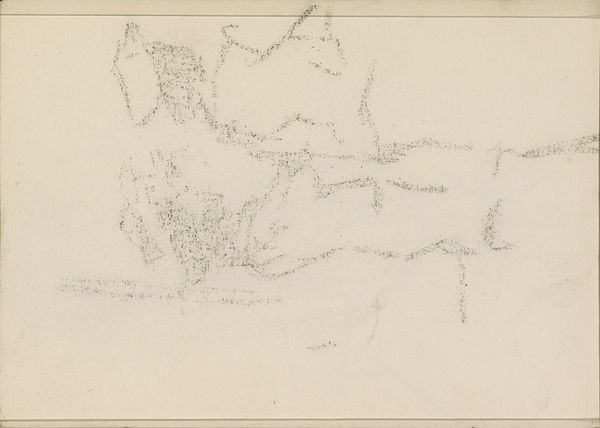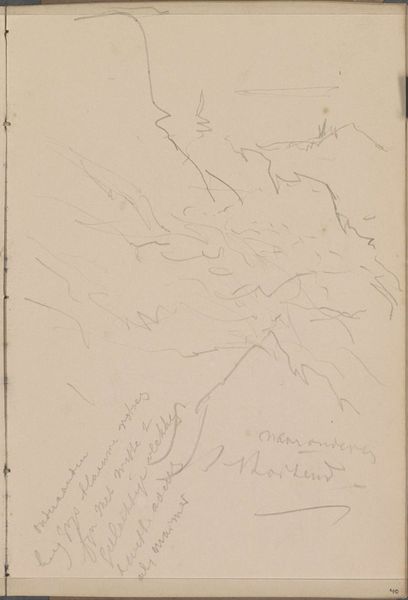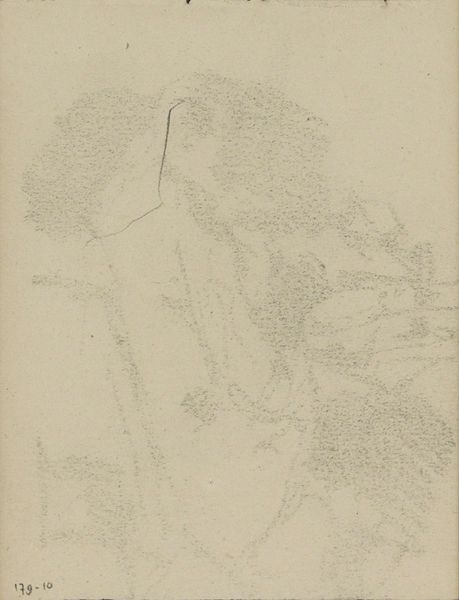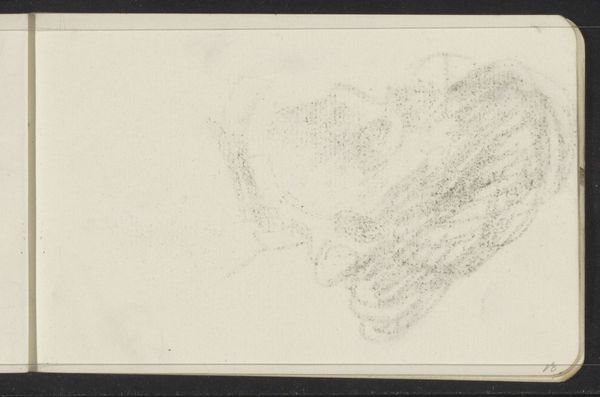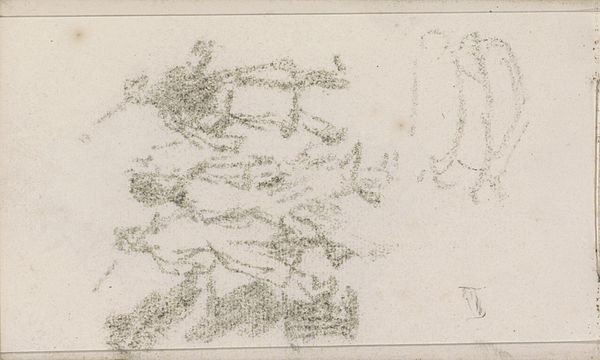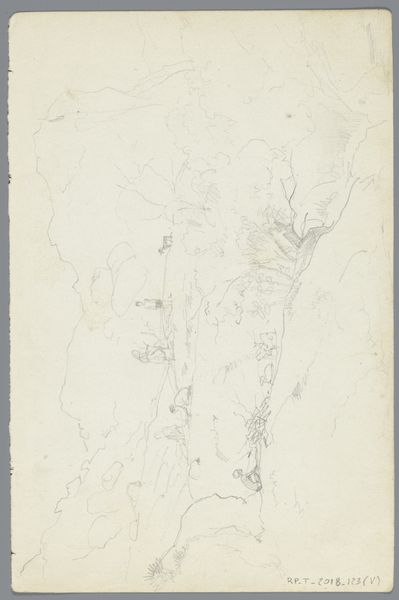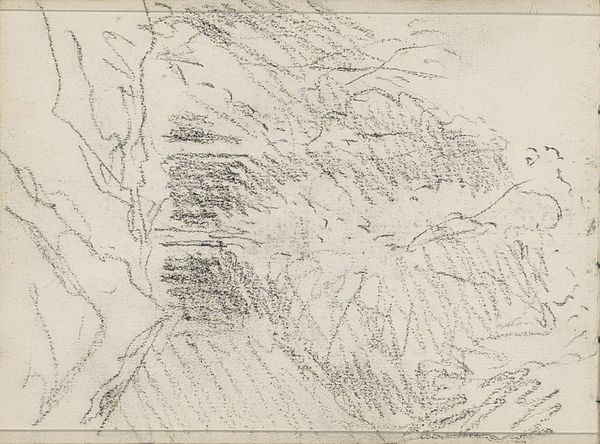
drawing, graphite
#
portrait
#
drawing
#
pen sketch
#
incomplete sketchy
#
hand drawn type
#
figuration
#
personal sketchbook
#
ink drawing experimentation
#
pen-ink sketch
#
pen work
#
graphite
#
sketchbook drawing
#
sketchbook art
#
realism
#
initial sketch
Copyright: Rijks Museum: Open Domain
Curator: Welcome. Today, we’re looking at "Abklatsch van de krijttekening op blad 8 verso," a drawing by Isaac Israels, likely created between 1875 and 1934. It resides here at the Rijksmuseum. Editor: It strikes me immediately as a rather ghostly assemblage. There's a hazy quality to the figures, like faded memories struggling to solidify on the page. I notice how the layering of the figures creates a dynamic sense of movement. Curator: It’s essential to consider the social context of Israels' work. He often depicted everyday scenes, capturing fleeting moments of ordinary life. Here, though sketchy, are likely representations of women. The casual style suggests a commentary on the accessibility of art. Whose stories were being told, and by whom? Editor: That’s a valid point. I'm also interested in how the graphite medium itself contributes. The use of graphite allows for soft lines and subtle gradations. Semiotically, the very sketchiness, the incomplete nature of the forms, almost communicates a modern understanding of the world. Details like the lack of clear outlines speak volumes. Curator: Absolutely. The sketch might indicate how quickly Israels worked but it also hints at the role of women within artistic representation during this time. Were women really visible, or still partially erased? Editor: Considering formal components: the absence of sharp outlines could serve to enhance the sense of naturalness in a realistic portrait. It is all form with little emphasis on structural constraints or traditional academic approaches. This approach, breaking norms, aligns with realism. Curator: His art became part of the visual fabric through which contemporary viewers saw their society. So what narrative does the drawing invite given what might seem initially like inconsequential art practice? Does its unfinished aesthetic align with other radical or progressive pieces, providing representation, where before women or laborers may have gone un-noticed? Editor: Well, regardless of any broader statement, and whether intentional or coincidental, I find the lack of crisp, defined edges adds visual intrigue, allowing the eye to wander and participate. Curator: A reminder that art often exists beyond initial intention. Editor: Indeed, the dialogue between artist and artwork continually extends and re-negotiates across space and time.
Comments
No comments
Be the first to comment and join the conversation on the ultimate creative platform.
